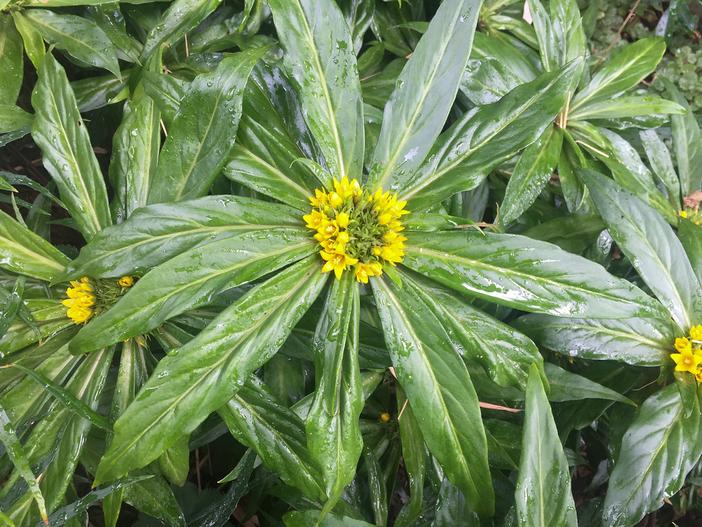Chinese Loosestrife
(Lysimachia paridiformis)
Chinese Loosestrife (Lysimachia paridiformis)
/
/

Megan Hansen
CC BY-SA 2.0
Image By:
Megan Hansen
Recorded By:
Copyright:
CC BY-SA 2.0
Copyright Notice:
Photo by: Megan Hansen | License Type: CC BY-SA 2.0 | License URL: https://creativecommons.org/licenses/by-sa/2.0/ | Uploader: MeganEHansen | Publisher: Flickr






















Estimated Native Range
Summary
Lysimachia paridiformis, commonly known as Chinese Loosestrife, is an evergreen perennial herb native to the forest margins, stream banks, and moist meadows of South Central and Southeast China. It typically reaches a height of 2 feet (0.6 meters) and a width of 3 feet (0.9 meters). The plant has a clumping form with upright stems and lance-shaped leaves. During the summer, it produces terminal clusters of star-shaped, yellow flowers that are quite showy and attract pollinators.
Chinese Loosestrife is valued for its vibrant yellow flowers and its ability to thrive in moist, shady conditions, making it a suitable choice for woodland gardens, water garden margins, or as ground cover in part-shade to full-shade areas. It prefers consistently moist soil and can tolerate a range of soil types as long as they provide good drainage. While it enjoys full sun in cooler climates, in hotter regions, it benefits from some afternoon shade to prevent scorching. It is not commonly afflicted by serious pests or diseases, but can occasionally suffer from rust or leaf spot. This plant can spread by rhizomes and self-seeding, so it may require management to prevent it from becoming invasive in ideal conditions.CC BY-SA 4.0
Chinese Loosestrife is valued for its vibrant yellow flowers and its ability to thrive in moist, shady conditions, making it a suitable choice for woodland gardens, water garden margins, or as ground cover in part-shade to full-shade areas. It prefers consistently moist soil and can tolerate a range of soil types as long as they provide good drainage. While it enjoys full sun in cooler climates, in hotter regions, it benefits from some afternoon shade to prevent scorching. It is not commonly afflicted by serious pests or diseases, but can occasionally suffer from rust or leaf spot. This plant can spread by rhizomes and self-seeding, so it may require management to prevent it from becoming invasive in ideal conditions.CC BY-SA 4.0
Plant Description
- Plant Type: Herb
- Height: 1-1.5 feet
- Width: 1.25-2.5 feet
- Growth Rate: Moderate
- Flower Color: Yellow
- Flowering Season: Summer
- Leaf Retention: Evergreen
Growth Requirements
- Sun: Full Sun
- Water: Medium
- Drainage: Medium
Common Uses
Bee Garden, Bird Garden, Butterfly Garden, Deer Resistant, Hummingbird Garden, Low Maintenance, Rabbit Resistant, Showy Flowers, Water Garden
Natural Habitat
Forest margins, stream banks, and moist meadows
Other Names
Common Names:
Scientific Names: , Lysimachia paridiformis, Lysimachia trientaloides, Lysimachia paridiformis var. paridiformis, Lysimachia bodinieri, Lysimachia paridiformis subsp. elliptica, Lysimachia paridiformis var. elliptica,
GBIF Accepted Name: Lysimachia paridiformis Franch.